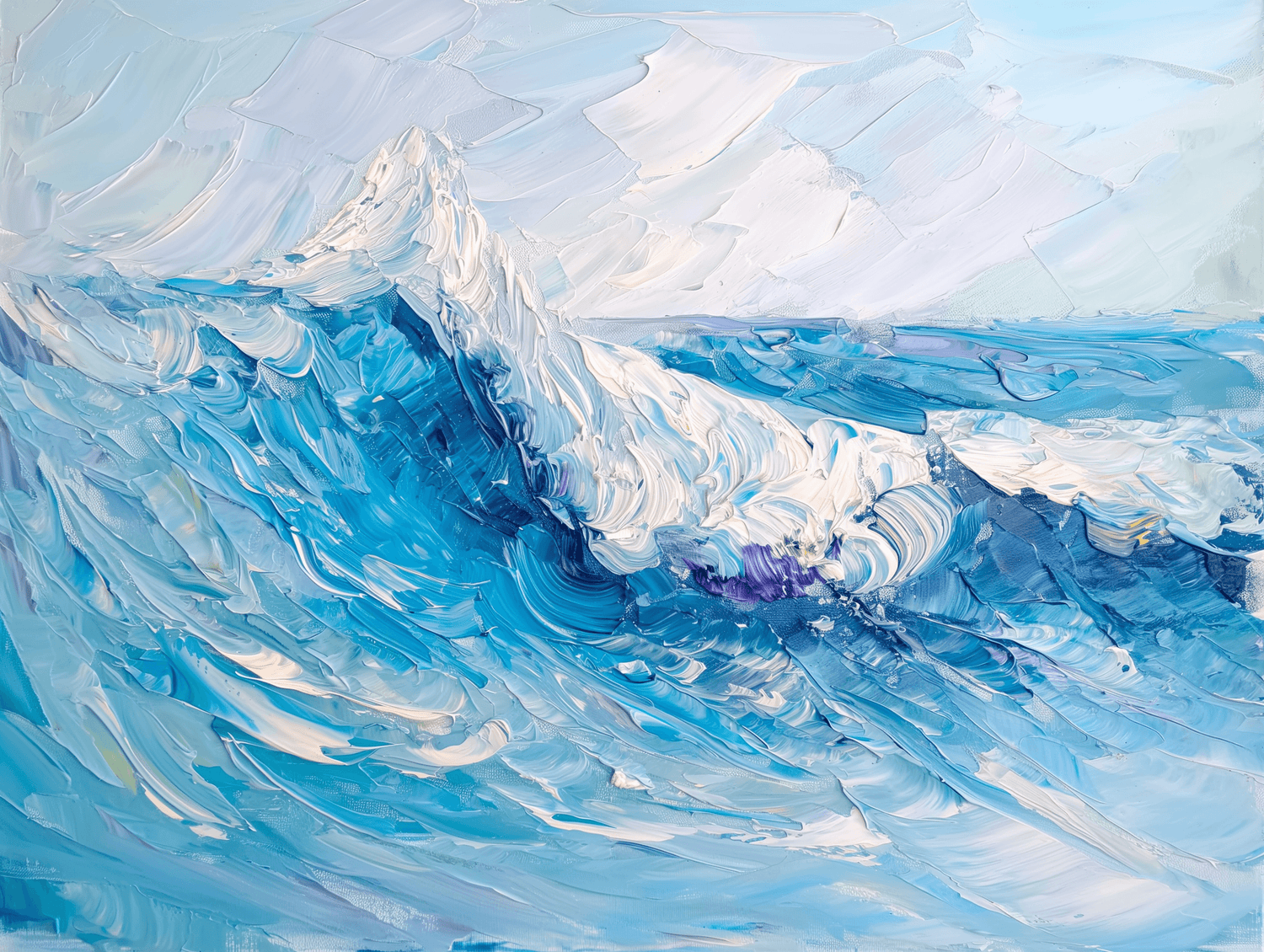 When it comes to furniture, Japanese style is synonymous with elegance, simplicity and harmony with nature. This style stands out for its attention to minimalism, the use of natural materials and the search for balance between spaces.
When it comes to furniture, Japanese style is synonymous with elegance, simplicity and harmony with nature. This style stands out for its attention to minimalism, the use of natural materials and the search for balance between spaces.
At the same time, Japanese art is rich in symbolism, delicate colors and breathtaking landscapes. If you want to bring a touch of art into your Japanese home, Materico's works, with their 3D effect that enhances the brush strokes and reproduces the tactile effect of the works, can be the perfect complement.
In this article, we will explore how to integrate Materico’s artistic reproductions into an environment that recalls the Japanese style, combining aesthetics and functionality, without compromising the serenity and simplicity that distinguish this type of furniture.
1. Features of Japanese style in furniture
Japanese style is based on some key principles that define its appearance:
- Minimalism : each object has a function and a precise place. There are no superfluous decorations, but rather a selection of essential pieces that contribute to the atmosphere of peace.
- Use of natural materials : Wood, stone, bamboo and natural fabric are often used to furnish spaces. This type of furniture creates a visual and tactile connection with nature.
- Soft and neutral colors : white, black, gray and brown predominate, evoking serenity and calm.
- Bright, airy spaces : Japanese homes are designed to be open and well-lit, with a feeling of spaciousness.
- Harmony with nature : a strong connection between the interior of the house and the surrounding environment, often visible through large windows offering a view of the garden.
2. How to integrate Materico's works into a Japanese space
Japanese art has traditionally influenced many Western art movements, and has been a source of inspiration for great artists such as Monet and Hokusai. To integrate Materico's works into a Japanese environment, it is necessary to respect some fundamental principles of Japanese furniture.
2.1. Simplicity and open spaces
In a Japanese style, each element has a precise function and a location that contributes to the harmonious flow of space. For this reason, Materico's works must be carefully selected, avoiding visual overcrowding.
- Focal Point : Choose one or two works to become the focal point of the room. For example, a painting like "Hokusai's Wave" can fit perfectly into a Japanese environment thanks to its natural motifs and reference to the strength of nature, which goes well with the serene and simple atmosphere of a Japanese-style home.
- Free Spaces : Don’t overdo the decorations. Japanese philosophy embraces simplicity, so select a few works that have a strong visual impact, but that don’t weigh down the space.
2.2. The use of colors
Japanese environments prefer neutral and natural colors. Materico's works, thanks to their ability to reproduce the three-dimensional effect of brush strokes, offer a unique opportunity to add texture and dynamism without weighing down the environment.
- Works with soft colors : Choose works with shades that recall the colors of nature, such as green, blue and brown. Works such as "Wheatfield with Cypresses" by Van Gogh, with its tones of yellow and green, integrate perfectly into a Japanese environment, where natural colors are predominant.
- Subtle Contrasts : Black and white works, such as Leonardo da Vinci's "Salvator Mundi", can be chosen for more sober Japanese environments, creating an elegant visual contrast that does not disturb the balance of the space.
2.3. Connection with nature
Japanese style is strongly inspired by nature, and this concept can be enhanced by works of art that represent landscapes or natural elements.
- Natural landscapes : Reproductions such as "The Café Terrace at Night" by Van Gogh or "Woman with an Umbrella in the Garden" by Renoir are perfect for a Japanese setting. Landscapes depicting nature or scenes of outdoor life add a touch of freshness and serenity, perfectly in tune with the Japanese style.
- Wood or bamboo panels : If you want to add a further touch of naturalness, you can combine Materico works with wood or bamboo frames, typical elements of Japanese furniture. These materials further enhance the natural effect of the works, maintaining a calm atmosphere.
2.4. The three-dimensional effect as an added value
Materico's works offer a unique feature: the three-dimensional effect. This detail can be integrated with the Japanese style in various ways.
- Focus on a few details : In a Japanese environment, less is more. Use the three-dimensional effect of the works to accentuate the beauty of the painting, but do not weigh down the environment with too many decorative elements.
- Play of light and shadows : The 3D effect becomes even more powerful when the light hits the surface of the work. You can place your Materico reproductions near windows that allow natural light to play with the reliefs of the work, creating fascinating visual effects.
3. How to enhance Materico's works with Japanese furniture
Finally, to best enhance Materico's works, it is important to also think about other aspects of Japanese furniture:
- Low tables and futons : Simple furniture, such as low wooden tables and futons, allow the environment to remain tidy and spacious. Materico's works, hung on the wall or displayed on shelves, add value without overloading the room.
- Soft light : Japanese lighting is often soft, with the use of paper lamps or bamboo lanterns. The soft lighting enhances the 3D effect of Materico's works, making the environment even more welcoming and relaxing.
4. Conclusion
With careful selection of works, proper lighting, and the use of natural materials, it is possible to create an atmosphere that celebrates the beauty of art and the simplicity of Japanese style.








